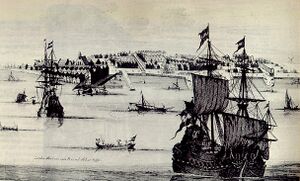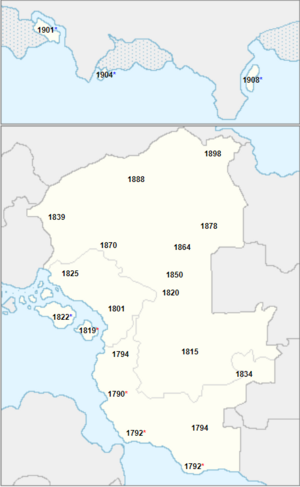History of Arcerion

The history of Arcerion began in the late eighteenth century with the settlement and establishment of Carnish colonies in the Southeastern Cronan Peninsula. The core territories of Arcerion's current sovereign borders would gradually expand until they reached their current state in 1975. Arcerion was predominantly settled
Prehistory
Indigenous Tribes
Early Colonial History (1790s-1880s)

Arcerion was first settled by early Carnish populations in the 1790s, becoming a recognized and organized colony in the Kingdom of Carna in 1793. In the period that followed, Kurst, Kinnaird, and Chester-on-Moore all grew into prosperous colonial towns, providing jobs and stability in a region that was noted for its shifting political states and reliability of colonial partners. Arco settlers spread quickly to what would become the rolling plains of Northlea governate, taking their pluck and knack for farming and creating vast farming estates, helping to boost the early colony's independence on foreign foodstuffs and goods by increasing tis self-reliance. By the 1830s, expansion into the mountains had begun, and the small mining town of Easthampton had discovered the resources that would help solidify Moorden's future as a raw ore and industrial processing center in Crona. Gained economic and interior governance independence in the 1880s. Full independence just before the Great War. A series of border skirmishes with their indigenous neighbours to the North would be a constant, with Arco militia forces taking over the bulk of the country's policing and security operations by the 1860s. Carnish influence continued to exist in the capital, and Arco settlers still proudly identified their loyalty to the crown and identified as citizens of Carna until they were granted self-rule and governance in 1886. By this time, there was only token presence of Carnish tax inspectors, administrators, and politicians, with the vast majority of government positions having been taken over by Arcer citizens. It was roughly this time that Carna began to permit the issuance of passport-equivalent paperwork and allowed Arcerion to have its own self-determined foreign policy, beginning with the fledgling emergence of Arcerion's Foreign Office, which first began as the Foreign Secretary and their staff.
Carnish and Gaelic Colonization
First Bush War
Second Bush War
Late Colonial History (1880s-1920s)
Self-governance and growth
Self governance brought its own series of challenges as Arcerion grappled with instituting its own public services and administrations. Arcerion specifically focused on the overhaul of its Parliament, resulting in the legislature moving away from a colonial model to a two-tiered system with an upper and lower house. By moving the lower-house to the Provincial/Governate level, the hope was that the creep of federal power would not detract from the Confederation as a whole. The result was a decentralized approach to governance allowed for individual governates to grow, with the assurance that the collective would support in times of need. By the late 1890s, increased border skirmishes required the country's first 'sovereign' or 'independent' deployment of military forces to Northlea and what was then-Northlea's Western portions, and what would eventually become Oakham governate. Multiple Arcer infantry, cavalry, and the first light artillery formations were sent North to combat the growing restlessness of indigenous populations who had begun to attack and murder families of Arcer farmers as they ventured out into the Cronan wilds to stake their claim. This period, The Border Wars, would help form part of modern (2000s) Arco policy towards Kelekona and Titechaxha, wherein the borders are rigorously patrolled and monitored.
The addition of Carna granting limited independence for economics and foreign politics meant Arcerion was finally able to unilaterally negotiate in Southern Crona, establishing relationships early with the two Kiravian colonies there, the Cape and Paulastra. Relations were generally friendly with both, as the hardships of settling Southern Crona was generally a bonding tenet of foreign policy on the continent.
As the decades continued the economy continued to grow, with Moorden's raw iron ore exports shipped through the Songun Straits out to the old world, and Arcer foodstuffs from Northlea governate slowly becoming more prevalent in markets and groceries through Southern Crona. Roads and rail systems began to be created under new infrastructure projects, as early politicians used the limited federal taxes and income to benefit the average Arco citizen. The establishment of the Arco National Railway Service (ANRS) in 1886 resulted in the nation's first heavy commercial rail line from the Kinnaird-Kurst areas to Easthampton to carry raw resources to ports for transport to manufacturing facilities abroad.